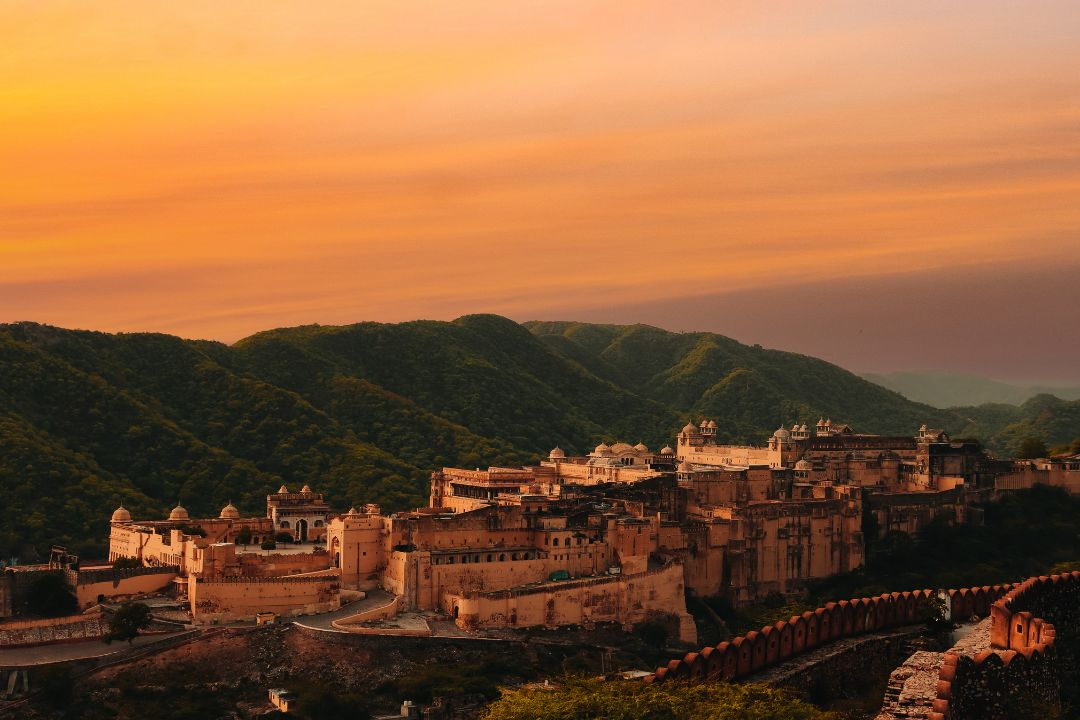Exploring Rajasthans Forts and Palaces A Royal Journey
01 Oct,2024

Overview
Rajasthan, also known as the Land of Kings, is well known for its opulent palaces and forts that evoke memories of a colorful and prosperous past. Travelers from all over the world are drawn to this northern Indian state because it is a veritable treasure trove of history, culture, and architecture. We'll take you on a royal tour of some of Rajasthan's most famous forts and palaces in this post, explaining their historical significance and the distinctive experiences they have to offer.
The Architectural Styles and Innovations of Rajasthan's Forts and Their Historical Significance
The architectural wonders of Rajasthan are its forts, which are a fusion of Mughal, Rajput, and Indo-Saracenic styles. The elaborate carvings, imposing gates, and vast courtyards of each fort attest to the creative prowess of the craftsmen of the era. Utilizing regional resources like marble and sandstone improves their durability in addition to their aesthetic appeal.
Part in both combat and defense
These forts were strategically important military strongholds in the past. Constructed on raised ground, they offered an advantage for identifying oncoming adversaries. A great deal of history has been added to the already legendary walls of many forts, such as Mehrangarh and Chittorgarh, by the intense battles they have seen. They were the center of government and the residence of royal families in addition to being defensive buildings.
Significance of Authority and Status
In Rajasthan, forts and palaces stand as testaments to the strength and status of the Rajput dynasty. They were intended to astound guests and engender reverence and wonder. These magnificent buildings serve as monuments to the rich cultural legacy and bravery of the rulers who once occupied them.
Famous Rajasthani Forts <br>Amber Fort
The 16th-century architectural marvel Amber Fort is situated not far from Jaipur. This fort, which is well-known for its imposing entrance and exquisite fusion of Mughal and Hindu architectural elements, has lovely gardens and elaborate mirror work. The Sheesh Mahal (Hall of Mirrors), with its shimmering reflective surfaces, is the focal point.
Fort Mehrangarh
One of the biggest forts in India is Mehrangarh Fort in Jodhpur, which is perched atop a rocky hill. It has enormous walls, breathtaking views of the city, and a museum with items from the royal era on display. The fort is a must-see because of its magnificent architecture, which features elaborate carvings and lovely courtyards.
Jaisalmer Fort
Rising out of the Thar Desert, Jaisalmer Fort, also called the Golden Fort, is a UNESCO World Heritage site. Constructed during the 12th century, this is one of the world's rare surviving forts, containing residences, hotels, and shops all inside its walls. The walls of the fort are made of golden sandstone, which glows beautifully in the sunlight.
Fort Chittorgarh
The largest fort in India, Chittorgarh Fort, is a representation of Rajput bravery. Renowned for its breathtaking palaces and temples, as well as the moving narratives of bravery and sacrifice, such as the legend of Rani Padmini, this UNESCO World Heritage site is well-known. The famous Vijay Stambh (Victory Tower) of the fort stands tall in remembrance of a major victory.
Jodhpur's Umaid Bhawan Palace
In addition to being an opulent hotel, Umaid Bhawan Palace is one of the biggest private homes on earth. This 20th-century palace combines Art Deco and Indian architectural designs. The royal family's lavish lifestyle is glimpsed through artifacts from their history displayed in the palace museum.
In summary
Discovering Rajasthan's forts and palaces is like traveling back in time, where culture, history, and architecture come together in breathtaking splendor. Every fort and palace has a tale to tell, showcasing India's rich heritage and the splendor of the Rajput era. A trip to these regal locations promises to be an amazing one, full of amazing vistas and diverse cultural experiences.